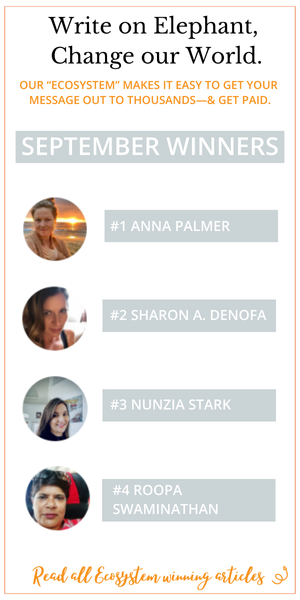“It’s not the object discovered that matters, but the light that falls on it “
Boris Pasternak
A family friend once gave me her doll when I was six. It was from the 1950s, one of those “walking dolls.” Just over three feet, I was initially excited about it.
And then, I started changing my mind.
I sat it in my rocking chair. I didn’t play with it. In fact, I soon got creeped out by the doll as I walked by it. I just didn’t have a good feeling about it; I was afraid of it.
My parents eventually threw it away because of my response.
I am not one of those people who have phobias about dolls. I have collected them all my life. As a child, I played with many baby dolls and Barbies.
Still, I can understand the “creeped out” perspective people have concerning them.
Back in the day, with my doll collection on display in my room, there is an eerie kind of light, between midnight and dawn that makes these toys look menacing, even demonic.
Hey, if there was a famous line in the horror flick, “Jaws,” talking about the shark’s killer black eyes looking like “dolls’ eyes,” there, yes, can be a real terror looking into these blank stares at three in the morning. It’s like the glow of the Michael Myers’ mask in the “Halloween” movie franchise.
Ghostly. Ghastly.
Not something you want to hug. Not something you want to encounter.
Not something you want, period.
The walking doll, years ago, has taught me a lesson about wanting what we think we want.
Don’t you want this?
We can believe the hype, ours, or anyone else’s, for that matter. We believe we want something. So, when our experience doesn’t match up, when we get “creeped out” by it, it’s usually not too long before we hear, “Don’t you want this?”
We can talk ourselves into wanting something we really don’t want. We can gaslight ourselves. We can believe we’re “supposed to” want this.
And, when we discover, no, we don’t, we blame ourselves. It’s our fault.
But to whom does this “want” belong? Is it ours? Is it someone- or something- else’s agenda at work? Would it be convenient, easy, problem-solving, and profitable if we, indeed, wanted what someone else wanted?
Like a medical or a law degree, so there’s a doctor or a lawyer in the family?
Too many times, we ignore answering a valid question, nagging us, “But do I want this?”
Let’s go back to the concept of a doll collection. A large, diverse, aesthetically preferable grouping of numerous dolls. Maybe there’s a honed emphasis on a certain kind of doll: antique, porcelain, or China doll, for instance. But they’re all making their presence known. They may be sequestered to one room or space; they could be spread throughout the home. But they’re there.
I’ve been a doll collector since I was a child. By my adolescence, I was dedicated to their display and preservation. My collection was grouped together on a long shelf in my room. Some were porcelain, with glass eyes. Some were ragdolls. There was even a celebrity doll, here and there, like a Judy-Garland-as-Dorothy-from- “The- Wizard- of- Oz” doll.
Toto, too!
Anyway, starting my staunch collector attitude in my teens, as I bumped along, I began to have buyer’s remorse as I acquired various dolls. I outgrew my need to have them. But more than that. I had an aversion for them now. I tried to cover them up with other dolls, so I wouldn’t have to look at them.
So, answering the question, “Don’t you want this?”, the answer was “No.”
But I felt there was no way out. I had committed to the dolls. No turning back. No making another choice. I may hate the dolls the entire time, eventually, but there was no backing out.
And that can apply to any of our objects of desire. We are stuck with them. Saddled with them.
We made our creepy doll bed.
Now we need to lie down IN it.
Are you scared?
The stuff of life can be scary. Again, the common doll can fit the bill here.
We may be uneasy. We may have an unpleasant response about a certain thing.
Is that unpleasant response…fear?
What we think we want, like that of a doll collection, can suddenly scare us. It can be intimidating.
Glassy doll eyes. Dream promotion. A rare antique. The love of a lifetime.
Just some possible examples of stuff we think we want that come to frighten us… for whatever reason.
Is it a good fear… or a bad one? Are we scared because something’s “too good to be true?” Are we freaked out because something is familiar? Is it healthy or unhealthy? Does it look like a perfect status symbol that will solve our lives?
Why are we afraid of “it?”
Gut instinct… or are we trying to talk ourselves out of heeding our gut instinct?
What IS This?
Is a doll just a doll, or is it truly menacing?
What is our object of desire?
What is this… and why is this?
Myopic tunnel vision, idealization, and magical thinking of our unruly inner children run amuck can keep us from answering the crucial questions, giving us insight into our natures.
I never got to the bottom of why that walking doll I was given as a child freaked me out so much. I liked dolls. Why couldn’t I like that one? Why couldn’t I feel anything besides creeped out, as, try as I might, I never convinced myself I was happy to have this walking doll?
I didn’t have a clue then, but I’m gaining more understanding now.
What does the light look like?
Enter therapy.
Enter “the light.”
“It’s not the object discovered that matters, but the light that falls on it “
Boris Pasternak
Light can illuminate. It can terrify. It can obscure and distort. It can educate.
What is our definition and presentation of light? What does the light look like?
Is the light truly that? What if it’s the diametrically opposing darkness, one filled with pitfalls and harm?
What if light, from our past, shown in precise and manipulative angles, really wasn’t the worst-case Boogey Man, after all?
Exploring these questions, through therapy, can get us more in touch with both light and our shadow selves. We have both.
It can be a doll collection that unsettles us. And it can be anything and anyone also.
Looking past the object to the response we have TO the light illuminating and distorting it, is a starting point to becoming healthier, peaceful, and better versions of ourselves.
What is the object? What is the light?
Copyright © 2023 by Sheryle Cruse








Read 0 comments and reply